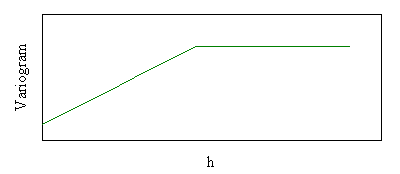Geostatistical Modelling
Continuity
The continuity and regularity of mineralisation is detected from the shape and the rate of growth of the variogram near the origin. Continuity and regularity may be classified as follows:
-
Highly continuous variables
The variograms associated with this type of mineralisation, have parabolic behaviour near the origin. Variograms of this type are so rare in mining as to be almost non-existent. (Fig. 5a) -
Figure 5a
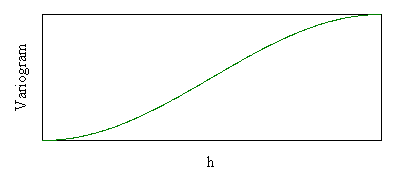
-
Moderate continuity
This is indicated by a linear behaviour of the variogram near the origin followed by a gentle and regular growth. Base metal deposits can produce variograms of this kind (Fig. 5b). -
Figure 5b
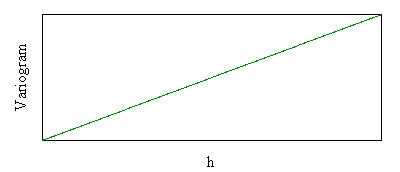
-
Discontinuity at the origin (nugget type)
This type of behaviour reflects poorer continuity of the mineralisation. This nugget effect is observed in practice to be partly due to the presence of micro-structures and partly due to sampling and assaying errors (Fig. 5c). This phenomenon is typical of gold deposits, although certain types of base metal deposits can produce appreciable nugget effects. -
Figure 5c
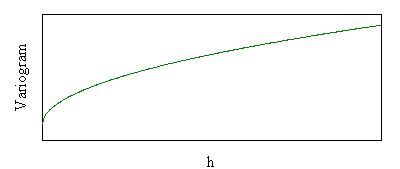
-
Random behaviour (pure nugget effect)
In this case a large and well pronounced nugget effect exists, expressing total lack of correlation between the assay values (Fig. 5d). -
Figure 5d
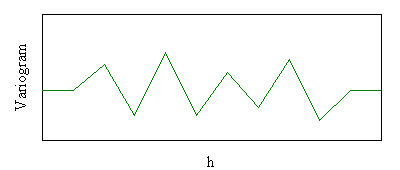
-
Transitional variograms
These show moderate continuity and a specific range of influence (Fig. 5e). Sedimentary iron ore deposits, copper deposits of sedimentary origin and certain hydrothermal deposits produce variograms of this kind. -
Figure 5e
